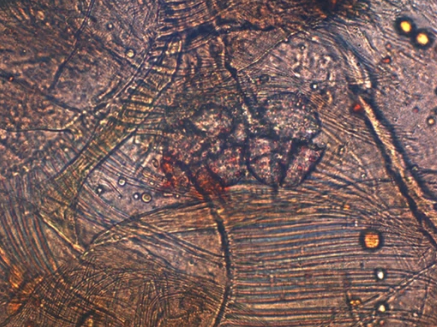This website uses cookies so that we can provide you with the best user experience possible. Cookie information is stored in your browser and performs functions such as recognising you when you return to our website and helping our team to understand which sections of the website you find most interesting and useful.

A species of small crustacean is able to break down microplastics into tiny particles in just a matter of days – much faster than previously estimated, scientists have said.
Until now, the breakdown of plastics in marine environments had largely been believed to occur mainly through slow processes such as being smashed apart by wave action, and decaying through prolonged exposure to sunlight.
But researchers at University College Cork (UCC) in Ireland have discovered that a “very common” invertebrate found in freshwater streams is able to rapidly break down microplastics (pieces smaller than 5mm) in less than 100 hours, until the fragments become “nanoplastics”, which are pieces measuring less than one micrometre.
The study’s leader, Dr Alicia Mateos-Cardenas, from UCC said: “We have found that the freshwater amphipod, a small crustacean called Gammarus duebeni, is able to fragment microplastics into different shapes and sizes, including nanoplastics, in less than four days.
“Whilst this species lives in Irish streams, they belong to a bigger animal group of invertebrates commonly found around the world in freshwaters and oceans.
“Our finding has substantial consequences for the understanding of the environmental fate of microplastics.”
The microplastics are fragmented by freshwater invertebrate animals as part of their digestive process.
But the discovery is not necessarily good news about the plastic waste clogging oceans and waterways.
The researchers described their findings as “alarming”, and said that while microplastics are known to regularly become stuck in the guts of seabirds and fish, current understanding suggests that the smaller nanoplastic particles could go further and penetrate cells and tissues where their effects could be much harder to predict.
“The findings that such a common invertebrate animal can rapidly produce vast numbers of nanoplastics is particularly worrying for researchers,” the authors of the study said.
Dr Mateos-Cardenas said: “These invertebrates are very important in ecosystems because they are prey for fish and birds, hence any nanoplastic fragments that they produce may be entering food chains.”
“The data in this study will help us to understand the role of animals in determining the fate of plastics in our waters, but further research is urgently needed to uncover the full impact of these particles,” she said.
The study is published in the journal Scientific Reports.



 Africana55 Radio
Africana55 Radio 

